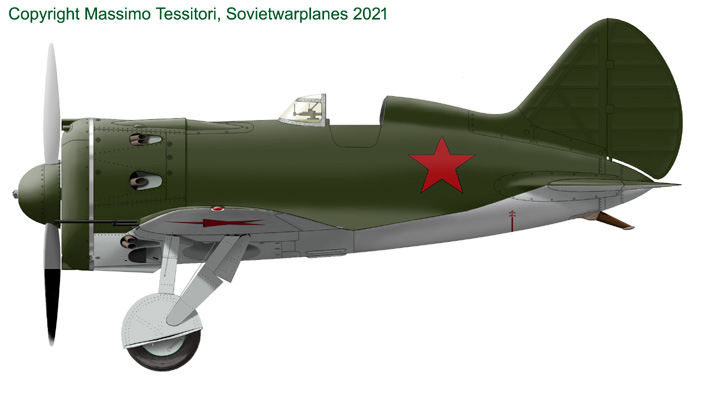
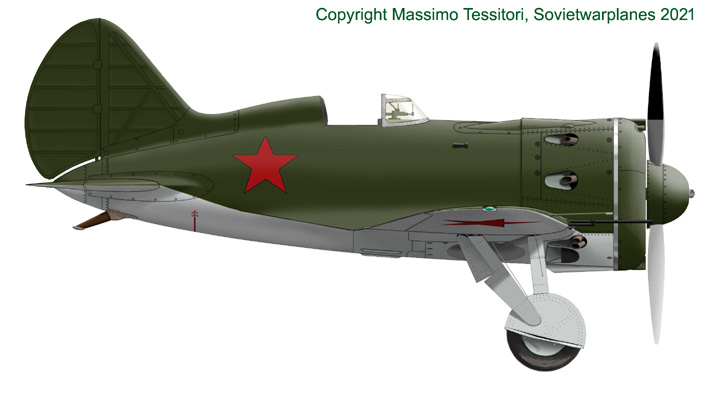
Profiles of a typical Type 27.
Its visual characteristics were:
-
AV-1 propeller with hydraulically movable pitch, visually distinguishable for the bigger and bulbous spinner or, when this was removed, for two balance weights on the hub (as Type 18- 24- 28);
-
a triangular air intake for the supercharger was put on the top of the cowling (as on Type 18, 24, 28, 29);
-
the intake of the oil cooler under the nose became trapezoidal with bent inside sides (as on Type 24, 28 and late 18);
-
a fairing for the oil cover outlet, that altered the profile under the nose (as on Type 18, 24, 28);
-
armed with two synchronized ShKAS on the nose and two ShVAK 20 mm guns on the wings (as on Type 17 and 28), easily recognizable for their big protruding barrels;
-
loading hatch for the guns on the rear top of the cowling (as Type 17, 28)
-
short ailerons and mechanically operated flaps;
- landing gear with splined shock adsorber as on Type 5-10-17 and straight cover of the leg, with the upper piece smaller than the lower one;
- tail skid (as on type 5-10-17);
-
on the rear of the sides of the cowling, a separate panel was provided to give better access to the ammo boxes of the synchronized ShKAS (as on Type 18, 24, 28, 29 and late Type 10 and 17);
-
open recesses for the ski gear in retracted position under the cowling, eventually closed by a removable optional plate that let only a slot on the rear for the exit of the cooling air of the engine; (as on late Type 10 and on Type 17, 18, 24, 28)
-
coupled exhaust pipes under the cowling;
-
PAK-1M gunsight (as on Type 24, 28 and 29).
It could be that some late production Type 27s had the same airframe of Type 28 (but preserved the M-62 engine) and were visually undistinguishable from it.
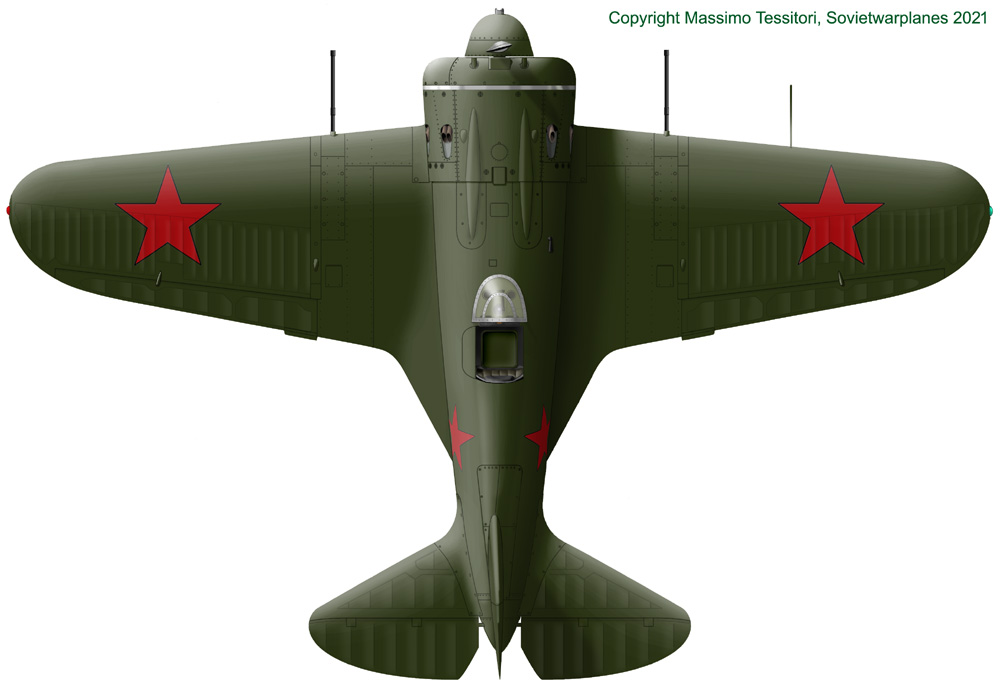
Above: top view of the Type 27.
When compared to Type 17, it visually differed for the MV-1 propeller and spinner and for the inlet of the supercharger.
When compared to Type 18, it visually differed because:
- of the ShVAK gun barrels instead of ShKAS;
- the hatches for the guns were slightly longer (from 650 mm to 744 mm), and with six locks instead of four;
- behind them, there were smaller hatches hinged on their front side;
- the loading hatch for the ShVAK guns, accessible through a cut on the rear of the top panel of the cowling.
When compared to Type 28, it visually differed for:
- the lack of pilot's door on the right side;
- the lack of leather protection on the edges of the doors;
- the lack of the large access to the radio bay on the right side.
Below: bottom view of the Type 27.
When compared to Type 17, it visually differed for the MV-1 propeller and spinner, for the inlet and outlet of the oil cooler and some details of the cowling.
When compared to Type 18, it visually differed because of the ShVAK guns, their peculiar outlets for waste links and for the lack of the wing ShKAS ammo hatches behind the cowling and the wheel bays.
When compared to Type 28, it visually differed for the splined type landing gear leg, its bays, for its doors that were straight and narrower, and the tail skid instead of a tail wheel.
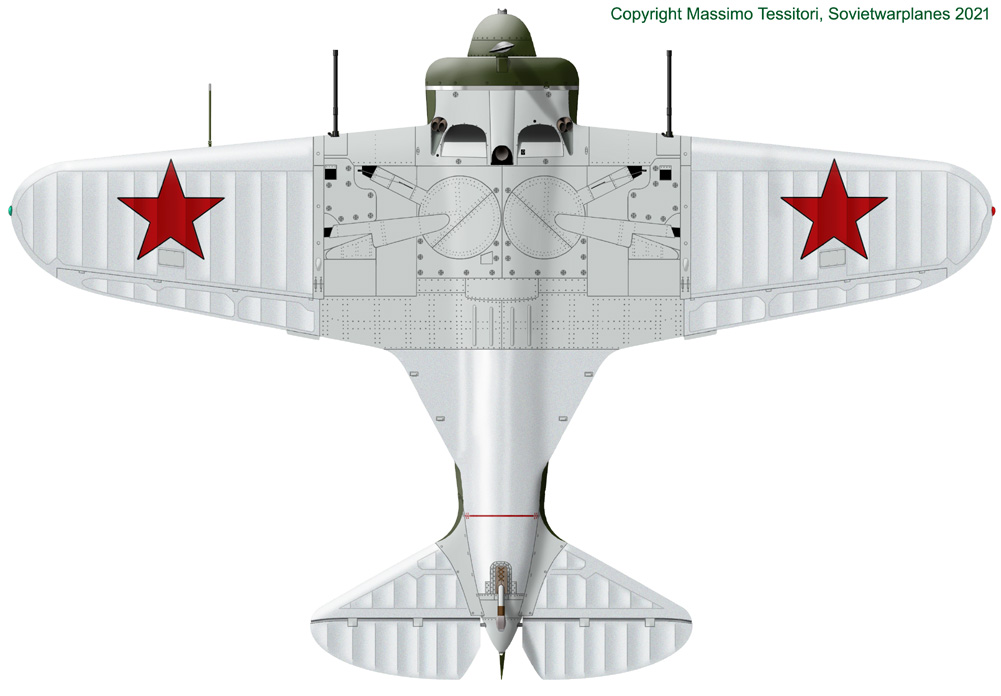
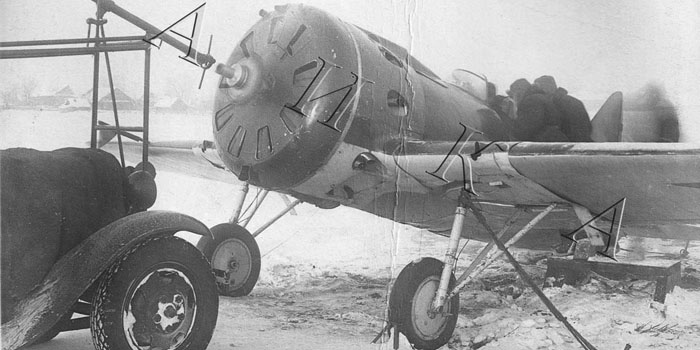
Being difficult to distinguish from Type 28, typical photos of Type 27 are rare.
This plane had its ShVAK dismounted; the lip and the asymmetrical opening on the wing leading edge are well visible.
Image: archive Zaika
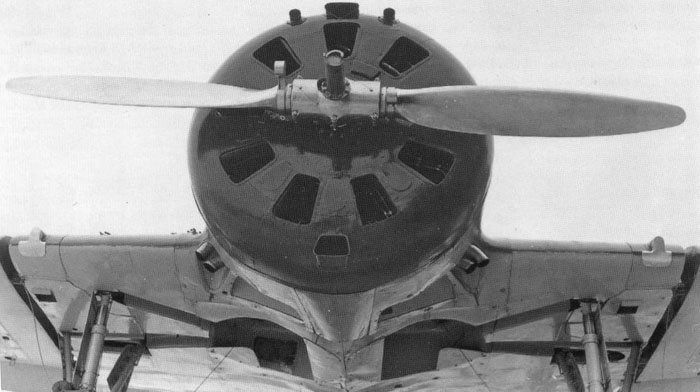
The only Type 27 well documented is one that made a forced landing in Finnish territory during the Winter War.
Strangely, it was misidentified as a Type 18, but the closed slots for the guns on the wings have the typical shape (inverted T and upper lip) of the ShVAK-armed versions; this is confirmed by the shape and position of waste shells slots.
This excellent photo shows very well the details of the MV-1 propeller, of the nose and landing gear bays common to many versions; note that the shape of the oil cooler inlet is atypical for its straight sides, usually they were bent inwards, and could be a Finnish modification.
The plane was equipped with a retractable ski landing gear; parts of the wheel bays are closed with shaped sheets to fit the retracted ski gear.
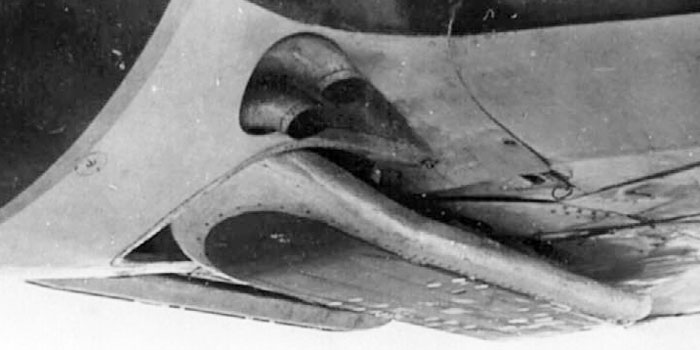
Detail of the fully retracted ski gear and of the grouped exhaust stacks.
Image from Istrebitel I-16 of Maslov
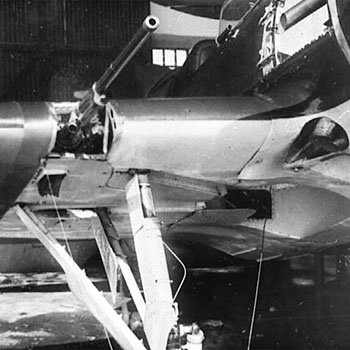
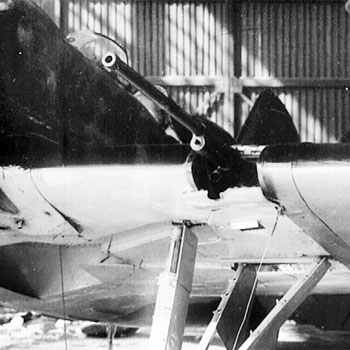
Left:
Two details of a ski-equipped plane. The ShVAK gun barrels are noteworthy, and common to Type 12, 17 and 28.
The landing gear has a splined rod anti-torque configuration, as on previous types. The cable for the retraction of the landing gear is clearly visible.
Right:
detail of the opening of the barrel, closed with a plate on the Finnish captured Type 27. It gives a good idea of the shape of the opening and of the lip above it.
Images from Istrebitel I-16 of Maslov
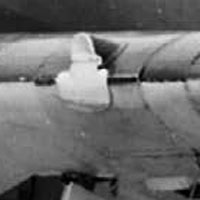
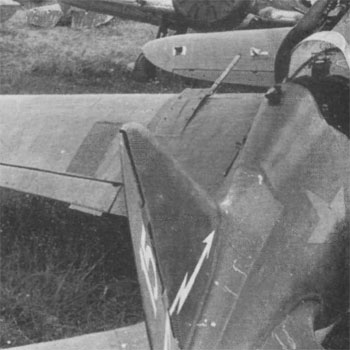
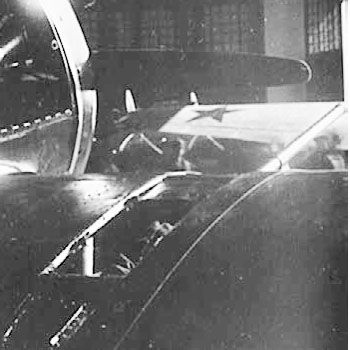
Right:
detail of the wing of a Type 28, representative of Type 27 too. One can see the hatch for the ShVAK gun.
The photo shows also the hatch to access the auxiliary tank mechanism, that wasn't usually installed on Type 27.
Closer: another image of the hatch for the gun on a Type 17. On the photo, we can also partially see the open cover of the small hatch behind the large one; it opens rotating forward.
Images from the web.
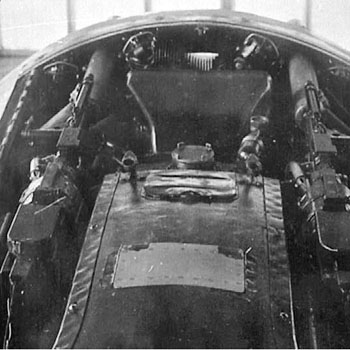
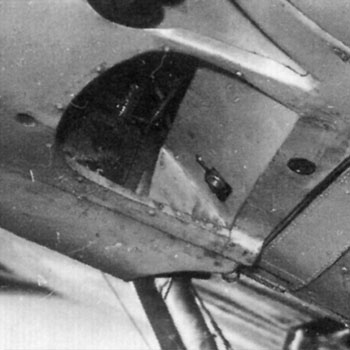
Left: detail of the top of the nose of a Type 17 with open engine cowling, very similar to Type 27.
At the center of the image, we see the square hatch for feeding the wing ShKAS, that was left accessible by a square cut when the cowling was installed. This was common to types 12, 17, 27, 28.
Other visible detail include the synchronized ShKAS, the supercharger intake (of Type 17, different from that of Type 27 that was connected to the triangular intake on the front by a tunnel) and a cylinder's head. Closer, and more visible, is the fuel refueling hatch.
Closer, left:
a better image of a ski recess on the Type 27captured by Finns. The recess itself was open and functioned as a cooling air outlet.
The fairing of the oil cooler outlet was protruding and open on its rear; it was different from Type 10 and 17, but the same of Type 18, 24 and 28.
The photo shows also the loading hatch for the wing ShKAS that was not present on standard Type 27, but a Finnish elaboration.
Images from Istrebitel I-16 of Maslov
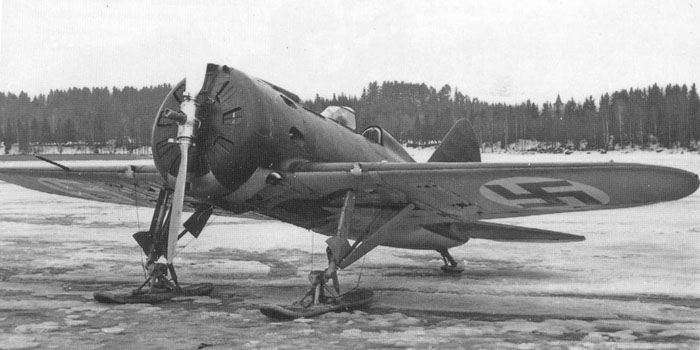

Other images of the same plane, that was marked as VH-201 and later VH-21 in Finnish service.
Note the plates for the auxiliary tanks under the wings, a Finnish addition with parts from another I-16. Further plates for accessing the system had to be added on the upper surface of the wings.
At first, the plane was repainted in Finnish olive green with silver undersurfaces, then received a black-green camouflage.
Images: Keski-Suomen Ilmailumuseo
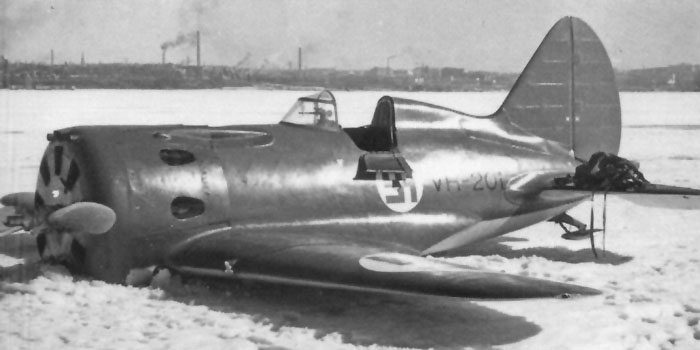
On 10 April 1940, the plane, flown by Lieutenant J.Visapaa, suffered an engine failure and belly landed on Lake Pyhajarvi. The landing was safe enough for the plane and its pilot.
Images: Keski-Suomen Ilmailumuseo
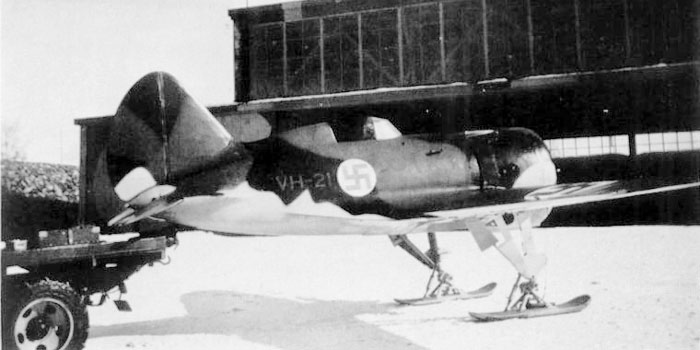
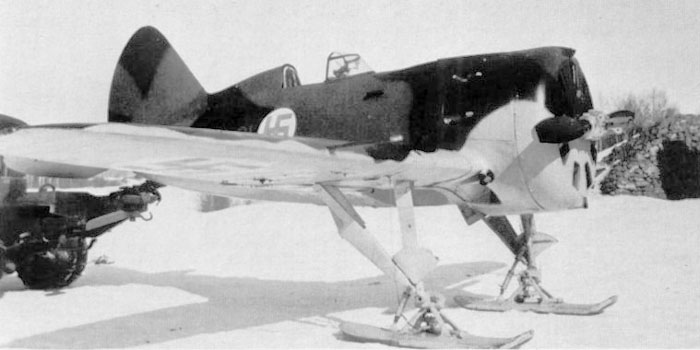
The plane was subsequently recoded as VH-21 and repainted in an olive and black camouflage with light grey undersurfaces.
The plane war rearmed with machine guns in its wings; their installation and slot expulsion slots were different both from the ShKAS and the ShVAK; these machine guns explain why it was often described as a Type 18 instead of 27.
Finns didn't like the plane: it was difficult to fly and had a long takeoff.
It flew only 6 hours in Finnish markings, then it was transferred in Germany on 15 April 1941 for testing.
http://i16fighter.aviaskins.com/operational-history/captured-minor.htm
http://i16fighter.aviaskins.com/operational-history/captured-minor/i16-finnish.htm
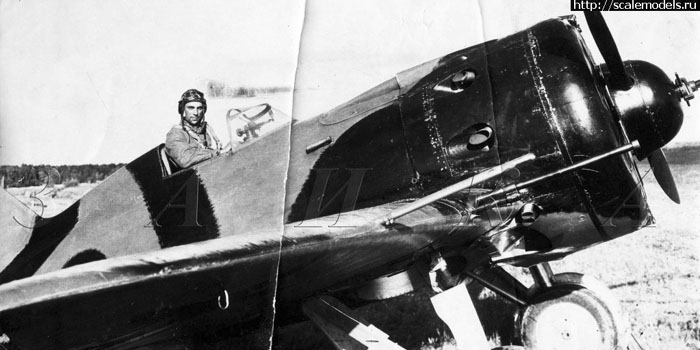
This plane with highly contrasted camouflage is of uncertain identification: the closer leg let see the scissor through the gap left by a missing cover, suggesting a Type 28, but the right door for the pilot and the hatch on the fuselage aren't visible, suggesting a Type 27.. The shape of the visible part of cover is strange, probably it is related to the rare version of the covers with strong curvature (as the Type 28 plane of Safonov preserved in Leningrad).
The likely conclusion is that the introduction of the landing gear with scissor was made before the addition of the door and hatch on the right side of the fuselage.
It's impossible to know if the engine was an M-62 or 63. Probably it was a late production Type 27 with the first form of the doors for legs with scissors.
The strong contrast of the camouflage is surprising, the green seems worn and toned down by remains of winter camouflage, while the black looks fresh and glossy; besides, whitish remains of winter camouflage look visible over the wings.
Image from Scalemodels.ru
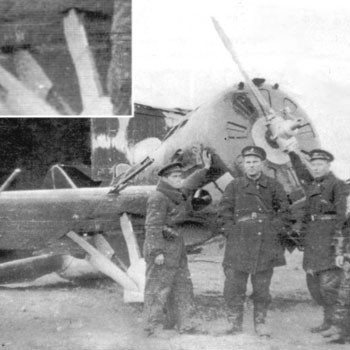
Image of late Type 27 or early Type 28 of 27 IAP. The detail shows that it was with the scissor type shock adsorbers and the early configuration of the doors extended to cover the extension of the vane necessary to lodge it. The door on the right side of the fuselage looks visible.
Apart for this, the only noteworthy characteristic is the white circle on the nose, replacing a white spinner as identification mark.
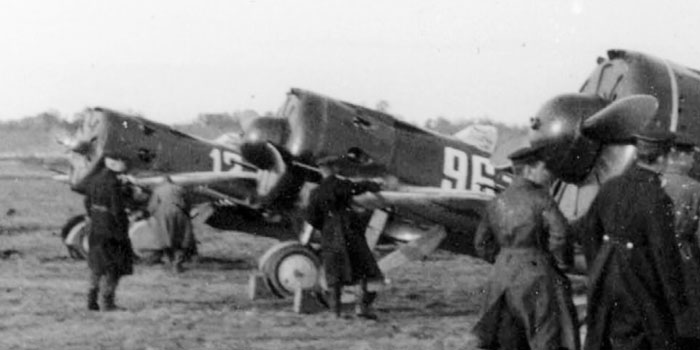
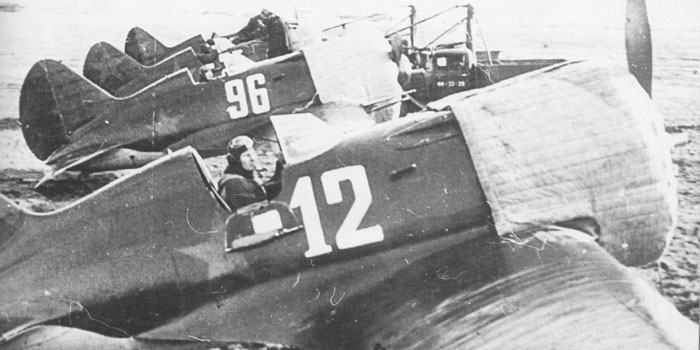
Above left:
Plane 96 of 4 GvIAP of Baltic Fleet in October 1942. The landing gear door suggests a Type 27.
The other planes of the line, White 12 and 25, were Type 29.
The font and position of the number was very common on I-16s of 1942, and is probably due to some rehauling center.
Image from Istrebitel I-16 of Maslov
Below left:
photo of the same planes from the other side. Despite the fact that other planes of the line had wide red stars on the tail, plane 96 had only the prewar style star on the fuselage and probably on the wings, but not on the tail.
Image from Red Stars of Geust, Keskinen, Stenman
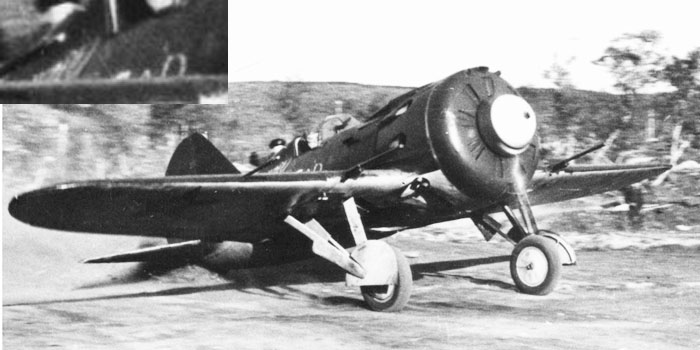
This plane of 72 SAP was flown by the famous ace Boris Safonov. The unit was located at Vaenga-1 air base, in the Murmansk area.
The shape of the landing gear cover, straight and narrow, denotes a Type 27. Certainly it is not the same plane preserved in the Navy Museum of Leningrad.
Probably the plane has something interesting painted on the fuselage; unfortunately it is almost hidden by the wing.
Image from M-Hobby 5/2019, article of M.Timin.